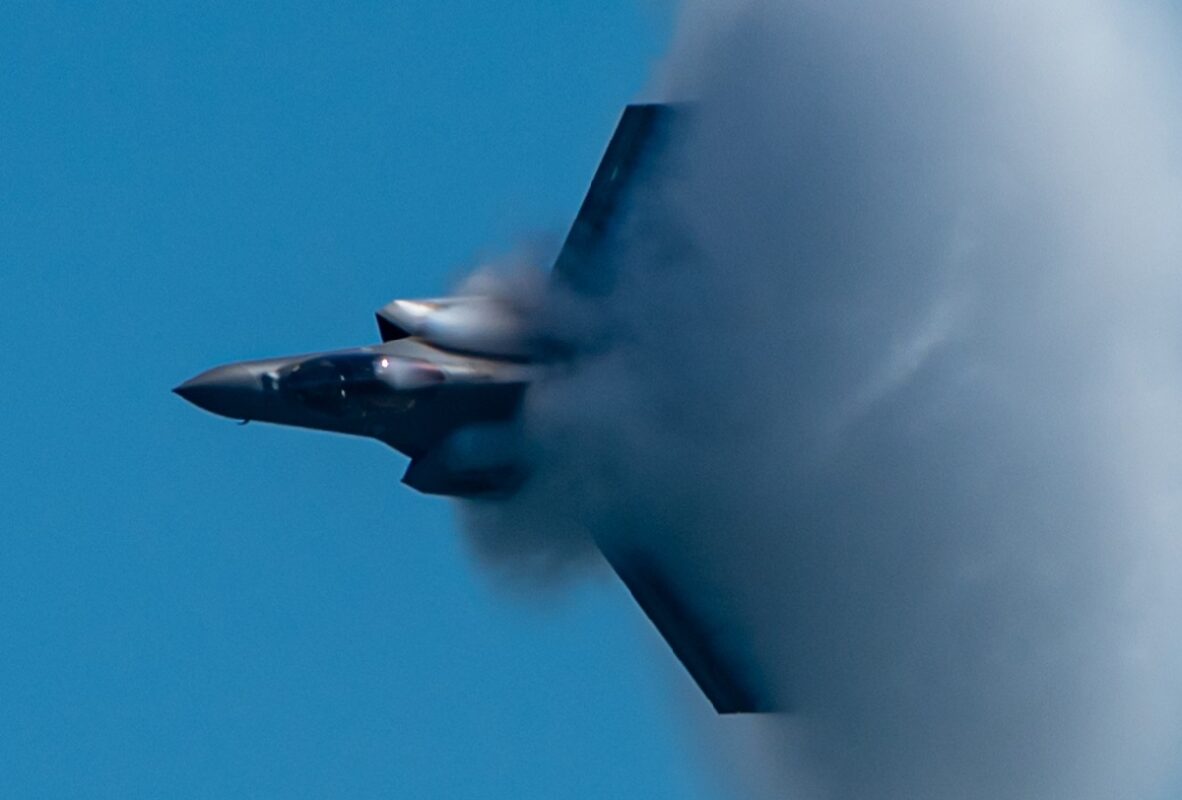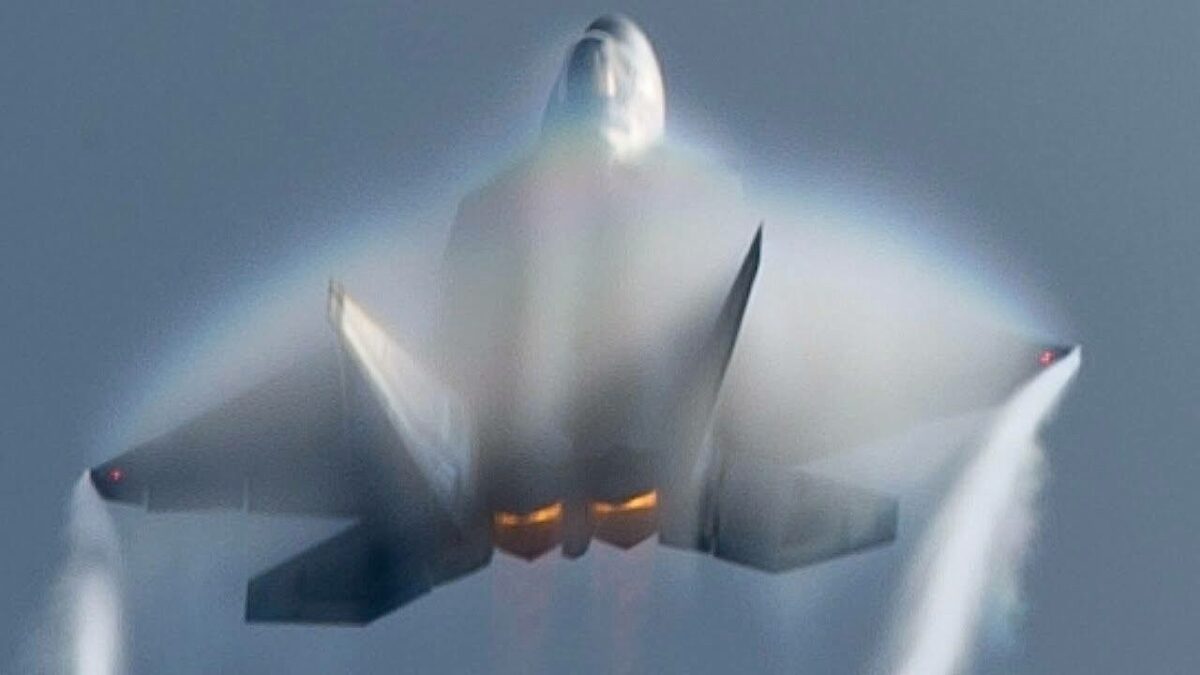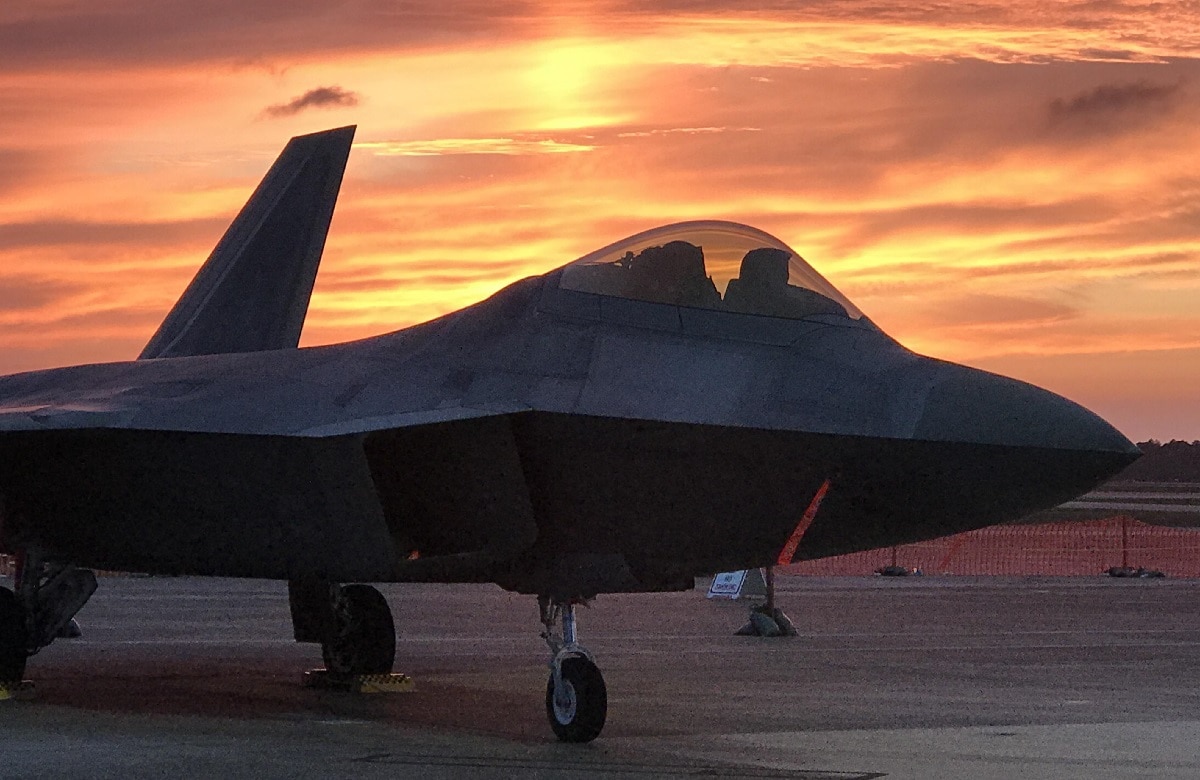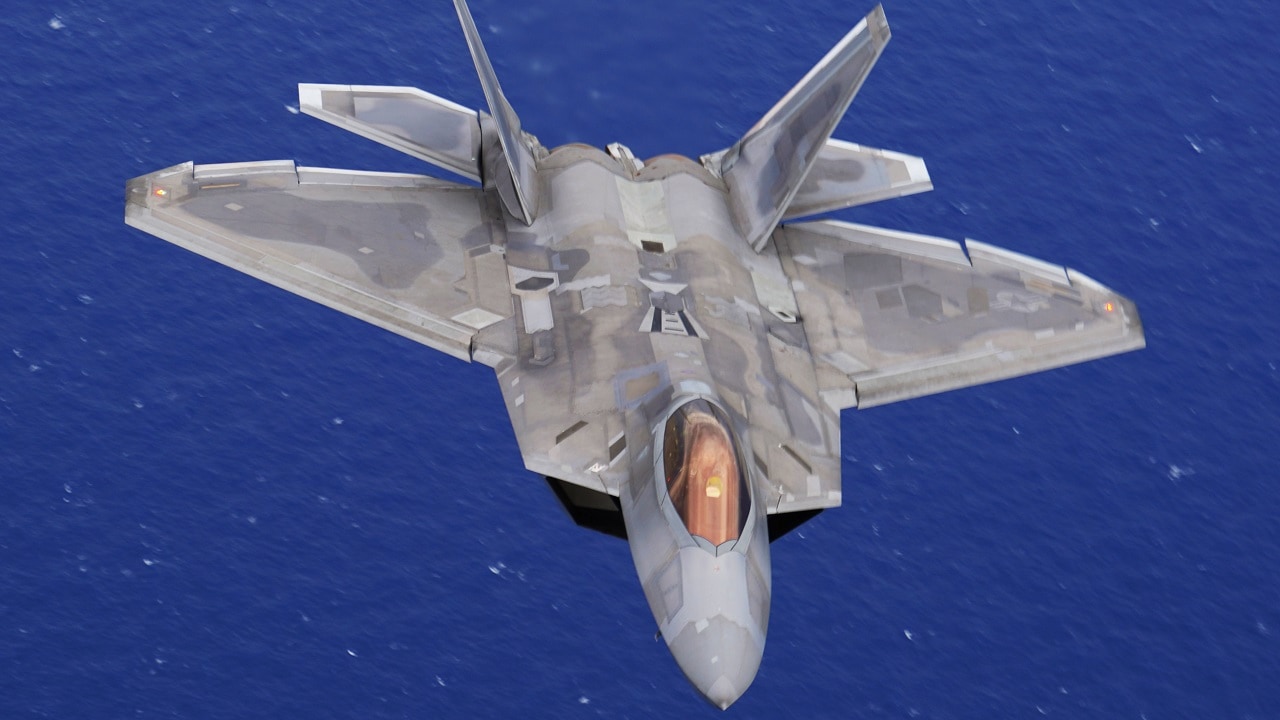Why the F-22 Raptor Just Might Be Unstoppable (or darn close to it): The People’s Liberation Army Air Force (PLAAF) regularly touts the capabilities of its advanced aircraft in the J-20, yet few outside of the Chinese military have ever seen the aircraft up close. By contrast, the United States Air Force regularly likes to actually show off its cutting-edge aircraft.
And not just at airshows.
On January 18, 2008, one of the most capable aircraft ever to take to the skies arrived at the National Museum of the United States Air Force: the Lockheed Martin F-22 Raptor.
The museum’s aircraft, serial number 91-4003, was one of nine built for engineering, manufacture and development testing in 1999, and became the first F-22 to launch an AIM-120 air-to-air missile at supersonic speeds. After completing its test program, the aircraft came to the museum and was restored by the museum’s restoration team.
It was the first and today remains the only F-22 on permanent public display.
“The F-22 Raptor’s unique combination of stealth, speed, agility, precision and situational awareness combined with air-to-air and air-to-ground combat capabilities makes it the best overall fighter in the world,” Lt. Gen. Frank G. Klotz, the then assistant vice chief of staff and director of the Air Force staff, said at the 2008 museum dedication.
Introducing the F-22
The U.S. Air Force F-22 Raptor is widely regarded as the most dominant fighter in the world. It is especially respected for its dogfighting ability and air-to-air maneuverability attributes which many contend it fits separately into a superior category compared with any other potential rival.
Primarily designed as an air superiority fighter, it also offers ground attack, electronic warfare, and signals intelligence capabilities. Powered by two Pratt & Whitney turbofan engines and is capable of reaching speeds of Mach 2 (1,534 mph/2,469 kph). It has a ceiling of 50,000 feet (15 kilometers) and a range of 1,841 miles (2,962 km) without refueling.
The Air Force had originally planned to buy a total of 750 of the F-22s, but the program was cut short to 187 operational aircraft, in addition to the eight test models. The high costs of the program, as well as a lack of clear air-to-air missions due to delays in Russian and Chinese fighter programs along with a ban on exports, resulted in the Air Force’s scaling back. Then Secretary of Defense Robert Gates reasoned that the aircraft had no place in the wars and Iraq and Afghanistan.
That decision essentially dismissed the notion that the United States needs to prepare for “wars of necessity,” and instead was too focused on wars of choice, notably those conflicts in the Middle East, where enemy airpower was never an issue. In fact, the United States has not actually prepared for a war of necessity in decades‚ and as such air superiority or air dominance has not been questioned.
The last F-22 Raptor was delivered in 2012.
Keeping the Raptor Flying
Despite the fact that it entered service in 2005, the Raptor has still steadily been updated. The Raptor was engineered with a unique weapons ability, a dynamic which has in recent years been massively upgraded. The Air Force, Raytheon and Lockheed have integrated performance-enhancing software upgrades into the F-22s weapons, to include the construction of newer AIM-120D and AIM-9X air-to-air weapon variants.
In November 2021, Lockheed Martin has received a potential 10-year, $10.86 billion contract to update and maintain the Air Force’s fleet of F-22s. This would include the Air Force’s procurement of modernization hardware kits along with systems upgrade, repair, and logistics support service through the Advanced Raptor Enhancement & Sustainment (ARES) program. The ARES indefinite-delivery/
F-22: Some Are Getting Retired?
However, Air Force officials have also called for the service to divest thirty-three of its oldest F-22s and use that money to research cutting-edge combat jet designs under the “Next-Generation Air Dominance” program. At the same time, the Air Force would upgrade the newer F-22s with more advanced sensors and further invest in the Lockheed Martin F-35A Lightning II.

U.S. Air Force Capt. Kristin “Beo” Wolfe, F-35 Demonstration Team pilot, tears through the skies during a rehearsal performance for the 2020 OC Air Show Aug. 14, 2020, Ocean City, Md. The OC airshow featured numerous performers to include the U.S. Air Force Thunderbirds, F-22 Raptor, A-10, and F-35 Demonstration Teams. (U.S. Air Force photo by Capt. Kip Sumner)

Image: YouTube Screenshot.

Image: Creative Commons.
If approved by Congress, all but three Block 20 Raptors would head to the “boneyard” and shrink the overall fleet of the F-22s from 186 to 153.
Now a Senior Editor for 1945, Peter Suciu is a Michigan-based writer who has contributed to more than four dozen magazines, newspapers and websites. He regularly writes about military hardware, and is the author of several books on military headgear including A Gallery of Military Headdress, which is available on Amazon.com. Peter is also a Contributing Writer for Forbes.
Want more 19FortyFive military, defense, and national security, as well as politics and economics analysis from the best experts on Earth? Follow us on Google News, Flipboard, YouTube, Facebook, Twitter, and Linkedin. Also, sign up for our newsletter here. You can also find our code of publishing ethics and standards here. Want to contact us? Email: [email protected]

